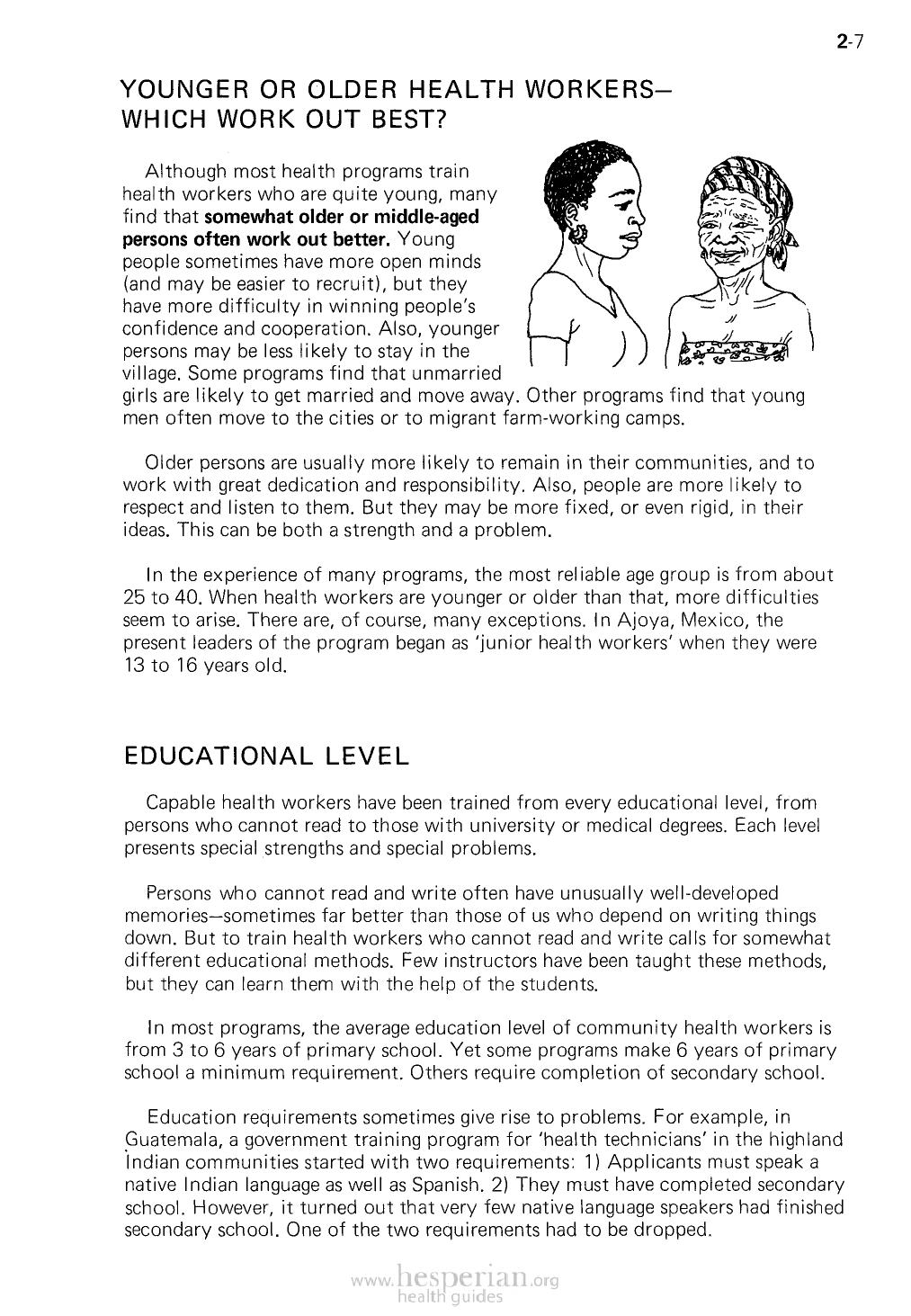
2-7
YOUNGER OR OLDER HEALTH WORKERS-
WHICH WORK OUT BEST?
Although most health programs train health
workers who are quite young, many find that
somewhat older or middle-aged persons
often work out better. Young people
sometimes have more open minds (and may
be easier to recruit), but they have more
difficulty in winning people’s confidence and
cooperation. Also, younger persons may
be less likely to stay in the village. Some
programs find that unmarried girls are likely
to get married and move away. Other programs find that young men often move to
the cities or to migrant farm-working camps.
Older persons are usually more likely to remain in their communities, and to work
with great dedication and responsibility. Also, people are more likely to respect and
listen to them. But they may be more fixed, or even rigid, in their ideas. This can be
both a strength and a problem.
In the experience of many programs, the most reliable age group is from about
25 to 40. When health workers are younger or older than that, more difficulties
seem to arise. There are, of course, many exceptions. In Ajoya, Mexico, the present
leaders of the program began as ‘junior health workers’ when they were 13 to 16
years old.
EDUCATIONAL LEVEL
Capable health workers have been trained from every educational level, from
persons who cannot read to those with university or medical degrees. Each level
presents special strengths and special problems.
Persons who cannot read and write often have unusually well-developed
memories—sometimes far better than those of us who depend on writing things
down. But to train health workers who cannot read and write calls for somewhat
different educational methods. Few instructors have been taught these methods,
but they can learn them with the help of the students.
In most programs, the average education level of community health workers is
from 3 to 6 years of primary school. Yet some programs make 6 years of primary
school a minimum requirement. Others require completion of secondary school.
Education requirements sometimes give rise to problems. For example, in
Guatemala, a government training program for ‘health technicians’ in the highland
Indian communities started with two requirements: 1) Applicants must speak a
native Indian language as well as Spanish. 2) They must have completed
secondary school. However, it turned out that very few native language speakers
had finished secondary school. One of the two requirements had to be dropped.